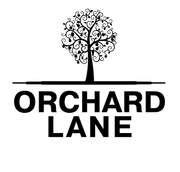
The Science behind Orchard Lane Jams and Preserves
Becoming a mother can change a woman forever. I have come to realize this too- being a mother of two little girls. It is like taking your heart out and placing it near a railway track, hoping that it should not be run over! That is how motherhood is. You have to let your children venture away, yet you worry. And for the most part of a child’s growing years, a mother worries about their nutrition.
The “Big Food gang” dominating the marketplace nowadays, have attractive foods, packed to perfection, catching children's eyes and have illusionary words like Natural, Healthy, No MSG. But not many of us really read labels and the ingredients in them. Food companies conceal sugar in the word 'carbohydrates', chemicals are quoted with their code names like E512, which cannot be understood unless someone has a degree in food science. My thoughts and propositions may invoke a a bunch of questions and a hundred reactions. But what are we really buying in packaged food these days?
Chemicals? Sugars? Colors? Lifeless food?
Thankfully, there are thousands of food lovers today, voraciously checking out new places for food, safe new products, healthy alternatives and it is because of this awareness they spread that consumers are getting to know what they are getting.
And so is the case with Fruit Jams.
Generally speaking, Fruit jams are made with 50% or more sugar. So a jar of jam is more than half filled with sugar syrup. Do we consume the sugar syrup of a Gulab Jamun with the same excitement as you do with packaged food? Most likely no. Because a Gulab Jamun has nothing to conceal- the sugar is out in the open, but 'Jam' is by and large an acceptable puree of a dozen ingredients that one does not understand. Simple. One needs to know why those ingredients are needed and what do they mean for us.
At Orchard Lane, our policy is simple - just too simple. We use just 3 ingredients - all 100% natural. And we use very little, bare minimum sugar. Our jams contain 72% fruit by weight and can be thought of as condensed fruit jars, with a 6 month intended shelf life. There is a tradeoff here - We do not overcook the fruit in order to get a longer shelf life, we like making small batches so that the nutritional content is not sacrificed.
Orchard Lane jams use traditional French recipes in which the fruit juice is extracted first, so the cooking time is greatly reduced, thus preserving nutritional value. There are no artificial preservatives, colors or flavors added. These jams simply relay the natural taste and flavor of fruits. Just like the fruit you buy in the market may taste a bit under-ripe or completely ripe and sweet, so do our jams. There are subtle sweetness levels as the season of a particular fruit progresses. But our added sugar levels always remain
below 28%.
Then there are other brands making fruit jam and having no sugar added to them, and sport a shelf life of 2 years. Beats me! The fruit in that jar is completely lifeless. To get a shelf life of 2 years, without preservatives, and without any sugar means cooking the life out of the fruit for hours and hours until what remains is a mass of dark looking jam that does not spoil at room temperature for 2 years. And then it is fortified with artificial vitamins and minerals, and advertised on the label! That is not what I would give my children with ease.
I eliminated all types of food from my children's diets- anything that contains preservatives, colors, flavors, any additive names starting with E or INS, anything with emulsifiers or thickeners. With the kind of health issues that are cropping up these days, I am not taking chances by feeding chemicals to my kids and thus my passion for Orchard Lane got stronger.
Orchard Lane jams are not only tasty and low in sugar, they are also a healthy addition to our diet. Fruits, that are cooked with care, without being overcooked, without any chemicals, and thus preserving the natural goodness of nature.
Without rambling on further, it is a fact that the science behind Orchard Lane is actually too simple for this long note. The aim is to make jams and preserves that consumers can actually trust and benefit from.
